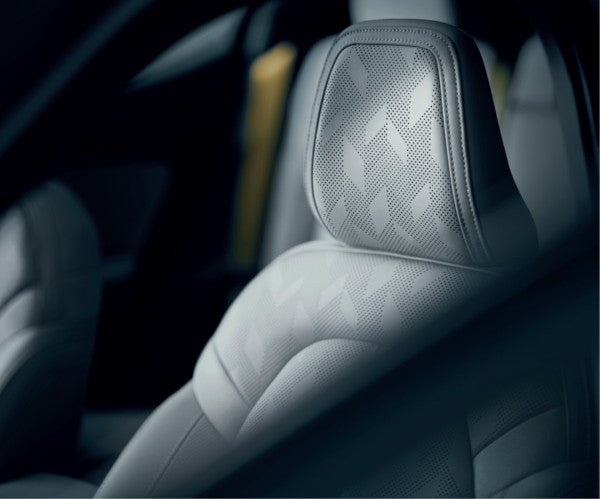
‘Buyer beware’ seems to be the best mantra for consumers when it comes to shopping for leather. Alternative materials with confusing names and perhaps a similar look and feel to leather make it tough to know what they’re getting. For fashion items, buyers can read the content tag. However, the content of materials used for the interior is a mystery when it comes to cars in the US. Currently, manufacturers are not required to disclose the make-up of materials they use in car automotive interiors, but a new piece of legislation taking shape in the New York Assembly could change that.
“For too long, consumers have been misled by vague and deceiving terminology used to describe car interiors,” New York State assemblyman Charles Fall told the New York newspaper the Staten Island Advance. “This legislation brings much-needed clarity and transparency to labelling materials used in seating, steering wheels, and gear shifters, empowering consumers to make informed purchasing decisions.”
This bill could be a model for more widespread consumer protection, but also a boost for the leather industry.
“Consumers don’t know what they’re paying for. It’s not necessarily all leather when you pay an upcharge for a premium product,” says Denny Salas, senior vice-president of lobbyist Gotham Government Relations. “The automotive industry has lobbied its way out of labelling laws,” Salas adds. This means buyers don’t know what the “interactable surfaces of the automotive interior” are really made from.
The text of the proposed law, which is still being discussed in the consumer protection committee of the New York State Assembly, lays out a number of standards and requirements. It aims to ensure transparency and accurate labelling of the material used inside cars, prevent misleading marketing practices, and provide consumers with clear and understandable information about the content of automobile interiors. This includes leather and plastic content.

Anyone who has shopped for a new car knows that opening the door releases that ‘new car smell’. But it also presents the buyer with an interior full of all sorts of materials and finishes. The problem is that determining the contents of those materials can be extremely difficult. Manufacturers have been skirting the issue of identifying interior materials for more than a decade. Brands have used terms such as ‘leather accents’ and, in this example from Hyundai, qualifiers like “finishes specified as leather may contain elements of genuine leather, polyurethane leather (leather substitute) or manmade materials, or a combination thereof”.
“Consumers don’t know what they’re paying for. It’s not necessarily all leather when you pay an upcharge for a premium product. The automotive industry has lobbied its way out of labelling laws.”
Denny Salas, Gotham Government Relations
Further muddying the waters are new material names: SensaTec is BMW’s brand name for its synthetic leather, Mercedes Benz has MB-Tex Interior Upholstery made from vinyl, and Volvo released Nordico, consisting of textiles made from recycled material such as plastic (PET) bottles, wood remnants and corks. There’s also Alcantara, a synthetic textile with a soft, suede-like microfibre pile that is made of polyester and polyurethane (PU). Some car brands, like Tesla, say they do not use leather but also refuse to disclose the materials that make up its seating and accents.
The proposed New York legislation would prohibit manufacturers from relying on marketing names, such as the ones listed because they are not descriptive of the material content.
The current market has underscored the need for labelling legislation due to the widespread use of the term ‘vegan leather’. Despite the fact that ‘vegan leather’ does not truly exist, many consumers are unaware of this distinction. Leather, by definition, is indeed an animal product. Products of all types have started to use the term ‘vegan’ to identify just about anything that is not an animal product. Poke around other industries and you’ll find descriptions such as ‘nappa PU’, ‘calf PU’ and even ‘vegan PU’.
The advent of electric cars has been another boost for these ‘vegan’ materials. As Motor Trend puts it, “vegan leather has become a must for premium electric cars’. And, as the publication points out, a lot of the new materials are largely a name game, because they are still mainly fossil fuelbased plastics like PVC and PU.

New York’s proposed material labelling law is not burdensome to manufacturers, Salas says. The bill’s language applies to the “interactive interior surfaces” such as the seating surfaces in all rows of the vehicle, headrests, steering wheel, and gear shift. It does not apply to seating side and back panels, where most manufacturers already use non-leather materials. It is also flexible for automakers: of the content of a surface is 70% or more of a single material, it can be labelled as that material, Salas explains. So, if a material is 70% PU, it can simply be labelled as PU. In addition to getting what they pay for, labelling can help consumers avoid materials that they may feel are hazardous. Plastics such as PVC and PU can be considered a problem because of some negatives associated with the material.
“This act levels the playing field, protecting consumers from unethical tactics and fostering a more honest and competitive automotive industry.”
Charles Fall, New York State Assembly
Some research has shown that materials made from polyvinyl chloride (PVC) in a very hot environment – like a car interior – can potentially expose occupants to dangerous volatile organic compounds. In addition, the production process for PVC is hazardous to the workers.
Some carmakers, Polestar, for example, had started to move away from leather, but has returned to responsibly sourcing leather. At the same time, they are also trying to innovate without relying so heavily on PVC because of its toxicity.
While the New York legislation may be the first of its kind in the US, various types of labelling laws are already in place in the European Union. The EU started its transparency and labelling law efforts in 2016 and now has a wide variety on the books and in development. Some specifically apply to fibre composition and limit the acceptable terms to a predetermined list. This is intended to “ensure that correct and uniform information is made available to all consumers in the Union”. Textile manufacturers can submit new textile names, but they cannot be simply new marketing names.
“Deceptive practices have eroded trust and created unfair advantages in the marketplace,” Fall told the Staten Island Advance. “This act levels the playing field, protecting consumers from unethical tactics and fostering a more honest and competitive automotive industry.”


